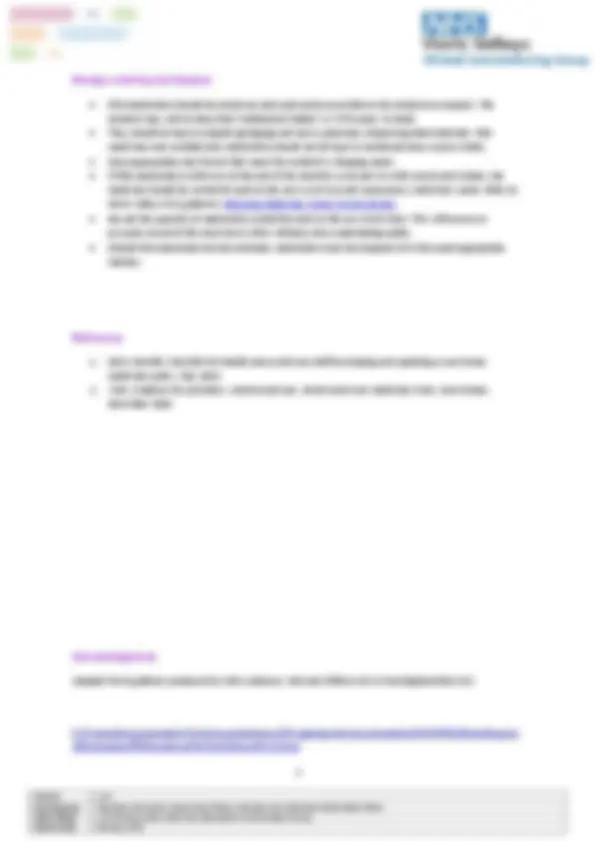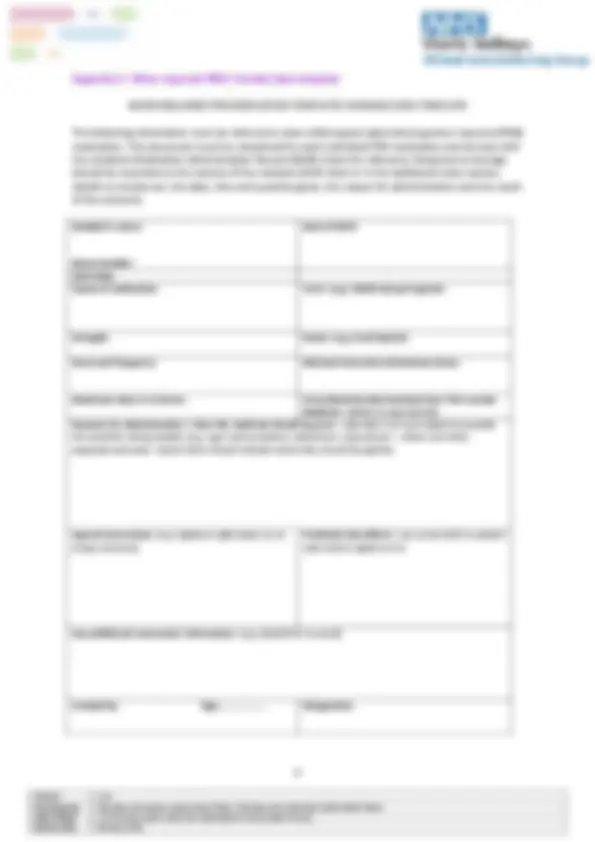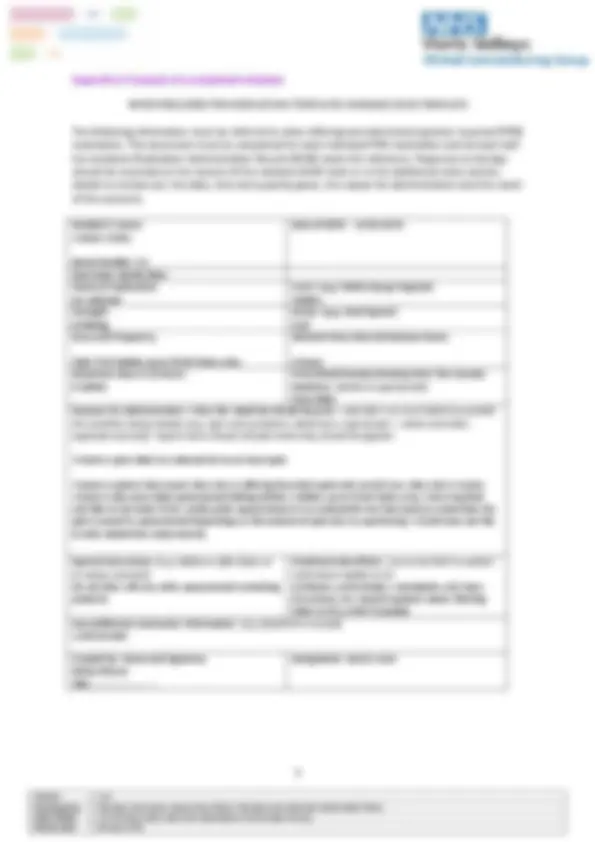





Study with the several resources on Docsity

Earn points by helping other students or get them with a premium plan


Prepare for your exams
Study with the several resources on Docsity

Earn points to download
Earn points by helping other students or get them with a premium plan
Community
Ask the community for help and clear up your study doubts
Discover the best universities in your country according to Docsity users
Free resources
Download our free guides on studying techniques, anxiety management strategies, and thesis advice from Docsity tutors
Guidance for care home staff on the safe administration of 'when required' (PRN) medications, also known as non-routine or as-needed medications. definitions, recommendations, storage, ordering, and disposal, and includes templates for recording medication information and response to therapy.
What you will learn
Typology: Study notes
1 / 5

This page cannot be seen from the preview
Don't miss anything!




Version V1. Developed by Pharmacy Care Home Improvement Team, Pharmacy and Medicines Optimisation Team. Date ratified V1.0 February 2020 (Medicines Optimisation Clinical Leads Group)
This guidance aims to support all staff administering ‘when required’ medication also known as PRN medication to residents in a safe way and to highlight key issues for care home staff to consider when administering PRN medication.
A PRN medicine is a medicine that is usually prescribed but is not required by the resident on a regular basis. It is usually prescribed to treat a short term or intermittent medical condition such as pain, indigestion or insomnia, and may consist of variable doses e.g. Paracetamol 500mg tablets Take ONE or TWO tablets every 4 to 6 hours when required.
The care home should have a policy in place for administering PRN medicines, please see link to the NICE guidance for care homes ‘NICE checklist for care home medicines policy’.
To ensure that PRN medication is administered as intended by the prescriber, the resident’s care plan should contain a clear indication of treatment and the intended outcomes. The following information is recommended:
To use a person-centred PRN protocol for each individual PRN medication prescribed. There should be one PRN protocol per prescribed PRN drug. These are best kept with the resident’s Medication Administration Record (MAR) charts (See appendix 1) The information in the PRN protocol should include (See appendix 2): The reason for administration. Details of alternative therapy to be attempted prior to administering medication as stated in the care plan. The resident’s awareness of symptoms. The resident’s capacity to request or refuse their medication. Whether the resident can ask for medication or what non-verbal cues staff need to look out for e.g. expressions of discomfort. When to offer and how to give the medication e.g. does the medication need to be given covertly? Refer to Herts Valleys CCG guidance: Covert Administration of Medication policy for Care Homes Clearly outline in which order medicines are to be administered where there is more than one option and time interval in between them e.g. multiple painkillers such as Paracetamol and Codeine or seizure medicines such as Diazepam and Midazolam.
PRN medicines should be offered routinely throughout the day and not only during the medication rounds. Remember to ask the resident if the medication is needed or check for non-verbal cues before administering. This saves pill burden and waste. PRN medication should only be administered for its intended use by the prescriber. PRN medication should not be offered more frequently than prescribed. Therefore it is important to note the minimum interval between doses and the maximum dose in 24 hours.
Version V1. Developed by Pharmacy Care Home Improvement Team, Pharmacy and Medicines Optimisation Team. Date ratified V1.0 February 2020 (Medicines Optimisation Clinical Leads Group)
It is good practice to record at each medication round that the resident has been offered the medication. The code may indicate ‘not required’. Care homes should not use the code indicating ‘refused’ if the medication is not needed as this will show an inaccurate record. If the PRN medication is given, the following details should be recorded to prevent incident or accidental overdose.
o Documentation on the front of the MAR, on the relevant medication entry should include: The date the medication is given. The time the medication is given. The initials of the nurse/ carer administering the medication.
o Documentation within care home records, for example the reverse of the MAR or in additional notes section should include: The date the medication is administered. The exact time of administration to ensure required interval time has passed before administering the next dose. The dose given particularly when there is variable dose (e.g. ONE to TWO tablets). The reason why the medicine was administered (e.g. back pain, vomiting or constipated). The resident should be monitored to see if their symptoms have been relieved and the nurse/ carer administering the medication should make a record of the outcome. It is good practice to record the time of the outcome and the care plan should be updated.
Contact the GP for advice or review if the resident:
Appears to be experiencing side effects. Appears not to be responding to the medication. Requests the medication more frequently than usual or more than prescribed. Medical condition has deteriorated. Rarely requests or regularly declines the PRN medication. In this case a homely remedy may be more appropriate. Refer to Herts Valleys CCG Guidance: Homely remedies guidance for care homes.
PRN medication should be reviewed routinely and / or when there is a new medicine prescribed the review date should be clearly stated.
Version V1. Developed by Pharmacy Care Home Improvement Team, Pharmacy and Medicines Optimisation Team. Date ratified V1.0 February 2020 (Medicines Optimisation Clinical Leads Group)
Resident’s name:
Room Number:
Date of Birth:
Start date: Name of medication: Form: (e.g. Tablet/Syrup/Capsule )
Strength: Route: (e.g. Oral/topical )
Dose and frequency: Minimal time interval between doses:
Maximum dose in 24 hours: Prescribed/Homely Remedy/Over The Counter Medicine ( delete as appropriate ) Reasons for administration: When the medicine should be given – describe in as much detail as possible the condition being treated. (e.g. signs and symptoms, behaviours, type of pain – where and when, expected outcome). Topical items should indicate where they should be applied.
Special instructions: ( e.g. before or after food, on an empty stomach)
Predicted side effects: Use current BNF or patient information leaflet to list:
Any additional comments/ information: ( e.g. food/drink to avoid)
Created by: Sign ………………... Designation:
Version V1. Developed by Pharmacy Care Home Improvement Team, Pharmacy and Medicines Optimisation Team. Date ratified V1.0 February 2020 (Medicines Optimisation Clinical Leads Group)
Resident’s name: Winnie Winter
Room Number: 22
Date of Birth: 14/01/
Start date: 06/06/ Name of medication: Co-codamol
Form: (e.g. Tablet/Syrup/Capsule ) Tablets Strength: 8/500mg
Route: (e.g. Oral/topical ) Oral Dose and frequency:
Take TWO tablets up to FOUR times a day
Minimal time interval between doses:
4 hours Maximum dose in 24 hours: 8 tablets
Prescribed/Homely Remedy/Over The Counter Medicine ( delete as appropriate ) Prescribed Reasons for administration: When the medicine should be given – describe in as much detail as possible the condition being treated. (e.g. signs and symptoms, behaviours, type of pain – where and when, expected outcome). Topical items should indicate where they should be applied.
Winnie is prescribed Co-codamol for lower back pain
Winnie is quieter than usual when she is suffering from back pain and can tell you when she is in pain. Winnie is also prescribed paracetamol 500mg tablets 2 tablets up to FOUR times a day when required and likes to be asked if she would prefer paracetamol or Co-codamol for her back pain as sometimes the pain is eased by paracetamol depending on the amount of pain she is experiencing. Winnie does not like to take medication unnecessarily.
Special instructions: ( e.g. before or after food, on an empty stomach) Do not take with any other paracetamol containing products.
Predicted side effects: Use current BNF or patient information leaflet to list: Confusion, arrhythmias, constipation, dizziness, drowsiness, dry mouth euphoric mood, flushing. Refer to PIL or BNF if needed. Any additional comments/ information: ( e.g. food/drink to avoid) Avoid alcohol
Created by: Name and signature Micky Mouse Sign ………………...........
Designation: Senior carer